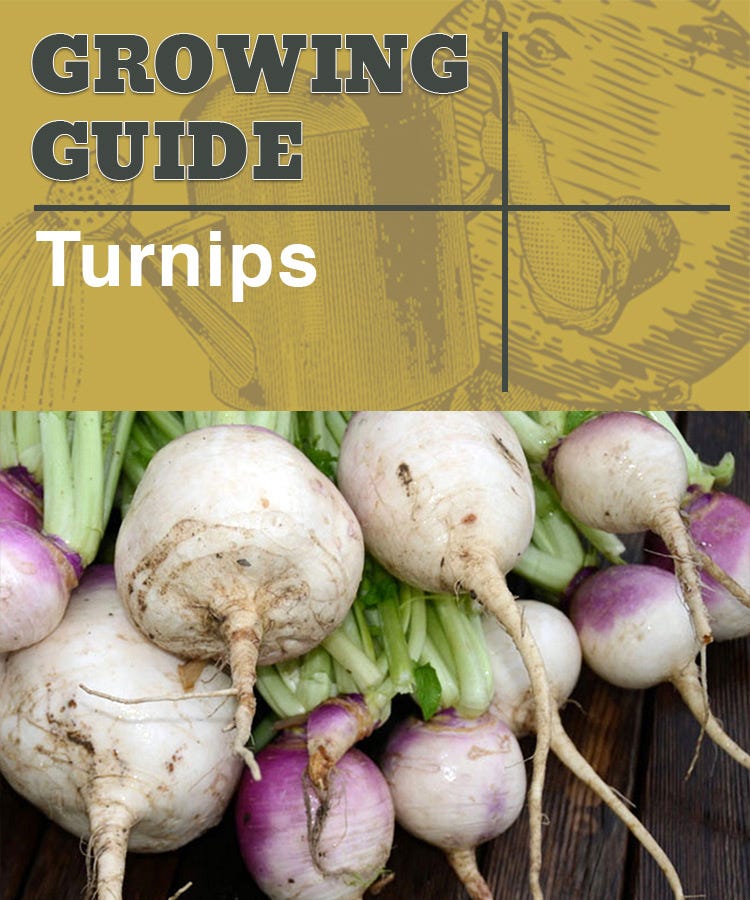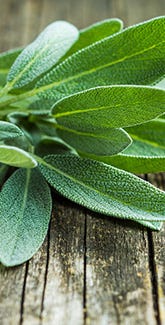Get Perfect Turnips to Turn Up!


Turnips Growing Guide
Easy in the garden, creative in the kitchen, and oh-so healthy on the table, turnips are a rewarding crop to grow for so many reasons. They're one of the fastest-growing vegetables you can plant, which makes them perfect for planting in the spring and again late summer or fall. And most varieties boast edible roots as well as greens, so they can be savored from top to bottom.
Sowing: Turnips can be planted directly in the garden in the early spring for a spring crop, and midsummer through early fall for a fall to winter crop. Seed should be sown thinly, about ½ inch deep in rows 12-18 inches apart. Plants should be thinned to 4-6 inches apart once they are 4 inches tall. Turnip seeds germinate very quickly (in just a few days) and the plants grow rapidly, producing edible greens in as little as a month and meaty roots in as little as two. While most turnip varieties have both greens and roots that are edible, some are grown for just the greens. For specifics, refer to each variety's individual product page.
Growing: Turnips like cool weather and their sweetness is greatly enhanced by exposure to hard frosts. As a result, some gardeners prefer to grow turnips as a fall crop as the fruits are likely to be more tender and flavorful than those planted in the spring. Turnips also prefer soils rich in potassium and phosphorus, but not in nitrogen. Adding bone meal and wood ashes to the soil before planting helps increase potassium and phosphorus levels. Water your turnip plants at a rate of about 1 inch per week and be sure the soil is well drained. Turnip plants to best when heavily mulched to help regulate moisture levels and ensure healthy roots. Be sure to weed plants regularly so the turnip roots are competing for soil nutrients and space.
Picking: Turnip greens and small turnips can be harvested about 30 days after seeding. Turnip roots are most flavorful and tender when harvested young when the roots are 2-3 inches in diameter. Larger turnips become tough and woody. Turnips can be stored for as long as 3-4 months provided they're kept in a cool dry place like an outdoor shed or open garage.
Eating: Turnips are loaded with vitamins like A, B1, B2, B3, B5, B6, C, E, K, and folate and are packed with minerals like potassium, calcium, copper, magnesium, and iron. They're also a substantial source of omega-3s, protein, and phosphorus. This means they're pretty amazing at dishing out an impressive assortment of health benefits, like fighting cancer, promoting cardiovascular, bone, eye, skin and hair health, and aiding in digestion and weight loss. And believe it or not, turnip juice has been said to help eliminate the problem of body odor.
Knowing: Turnips have been cultivated for thousands of years and are probably native to both Europe and central and western Asia. There are many different kinds of turnips, including purple-topped gold, purple-topped white, yellow, white, and golden. Some turnips are grown for their roots and some are grown exclusively for their green tops.
Container Friendly? While it's been said that anything can be grown in a container provided the container is big enough, turnips are root vegetables so container planting can be challenging. It's best to plant turnips directly in the garden to give their roots ample room to grow and spread out.



